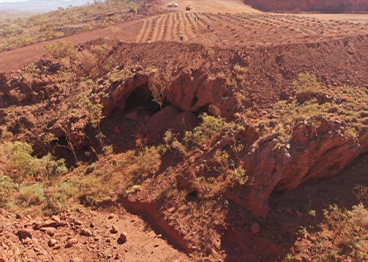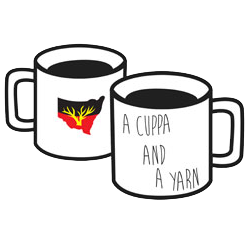
10 June, 2020
June 10, 2020
The New South Wales Aboriginal Land Council (NSWALC) is appalled and deeply saddened that sacred Aboriginal sites have been demolished in the act of mining in Western Australia’s Pilbara region.
As the peak body for Aboriginal Land Rights in New South Wales, we share in the distress and sadness our people and Land Rights Network colleagues are enduring with this news.
A sacred cave in the Juukan Gorge in the Hammersley Ranges, about 60 kilometres from Mt Tom Price was destroyed as part of an iron ore mine expansion by Rio Tinto.
The cave was one of the oldest in the Pilbara region. It showed 46,000 years of continual occupation and provided a 4,000-year-old genetic link to present-day traditional owners.
The fact that this was allowed to happen under Western Australian law is not only disrespectful to all Aboriginal people, past and present, it is an indictment on the archaic policies across the country which continually fail to protect the cultural legacy and heritage of First Nations people.
The fact that this news surfaced on the first day of National Reconciliation Week and the anniversary of the 1967 Referendum is further proof that Australian laws do indeed still have a long way to go.
NSWALC has, and continues to, campaign heavily for greater protection of sacred sites at the national level and here in New South Wales. A key aim of the first non-statutory NSW Aboriginal Land Council established in 1977 was for legal recognition of Aboriginal people’s culture and heritage rights.
Sadly though, New South Wales is lagging well behind. Destruction of sacred sites continues at alarmingly high rates. We know that Aboriginal Heritage Impact Permits are issued at up to five per week, granting permission to harm Aboriginal heritage. On top of that, illegal destruction through vandalism continues to occur.
We are continuing to lobby governments at all levels to provide further mandated guarantees and assurance that Aboriginal cultural heritage and sacred sites will be protected by strengthened laws. Crucially, NSWALC maintains that Aboriginal people must be empowered with authority, independent of Government, to make decisions and agreements about protecting our culture and heritage. There must be increased avenues for the protection of sites and strong penalties imposed for destruction.
However, this is not only about the protection of sites. There is a much a broader issue to consider. It is about the recognition, support and respect for Aboriginal knowledge, languages, and cultural practices. We are the world’s oldest living culture, but archaic laws are allowing that to be destroyed in the name of business and corporate greed.
Better protection mechanisms are urgently needed. At both national and state level there are still very limited avenues for Aboriginal people to seek formal protections for Aboriginal cultural heritage. We need government support with strong actions, not just words, to protect Aboriginal culture for future generations.
Commonwealth legislation must have greater power to protect our cultural heritage. The Aboriginal and Torres Strait Islander Heritage Protection Act 1984 must be improved to genuinely serve this purpose, rather than continually failing Aboriginal communities. It should have prevented destruction like that which took place in Western Australia.
NSWALC stands in solidarity with our brothers and sisters in Western Australia and pledges to continue its efforts to ensure this can’t be repeated at any other sacred Aboriginal sites across Australia.
On the back of National Reconciliation Week and in the lead-up to NAIDOC Week, this is a time when we should be celebrating and promoting our diverse Aboriginal cultures and heritage, not lamenting the systemic failures of outdated government laws which allow the systematic destruction of Australian history.
Image: Puutu Kunti Kurrama and Pinikura Aboriginal Corporation

